#gastropod molluscs
Photo
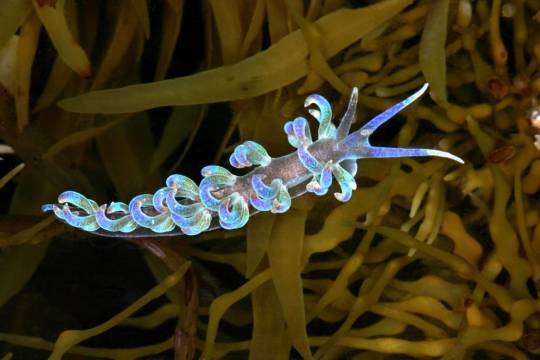
Sea slug (Phyllodesmium macphersonae).
#sea slug#sea slugs#phyllodesmium#phyllodesmium macphersonae#nudibranch#nudibranchs#gastropod mollusc#gastropod molluscs#aeolid#aeolidida#aeolid nudibranch#aeolid nudibranchs#water#underwater#ocean#marine#sea#aquatic#animal#animals#museumsvictoria#nature
10K notes
·
View notes
Text

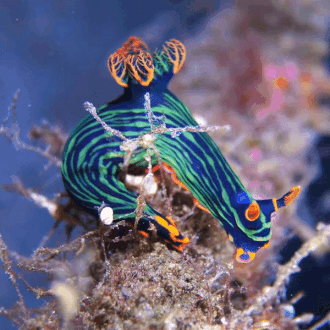


the dusky nembrotha (nembrotha kabaryana) | source
#stim#nudibranchs#sea slugs#sea creatures#sfw#blue#orange#green#brown#neon#marine life#oceans#underwater#animals#molluscs#gastropods#the dusky nembrotha#nembrotha kabaryana#nembrotha nigerrima#ishy gifs#postish
10K notes
·
View notes
Text
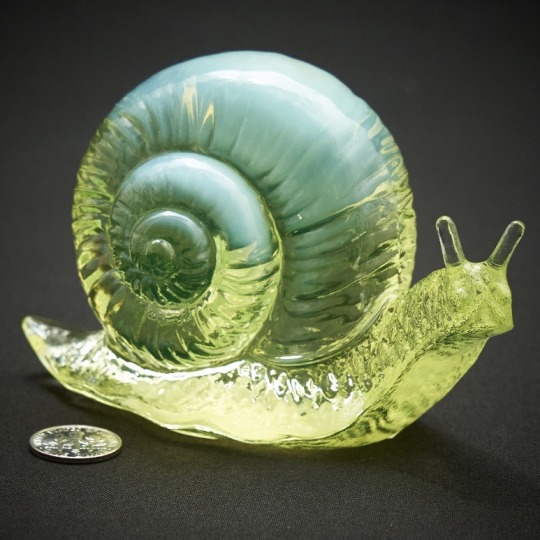

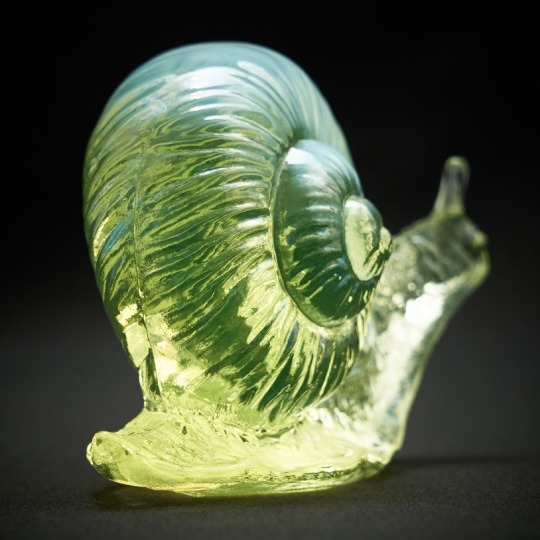
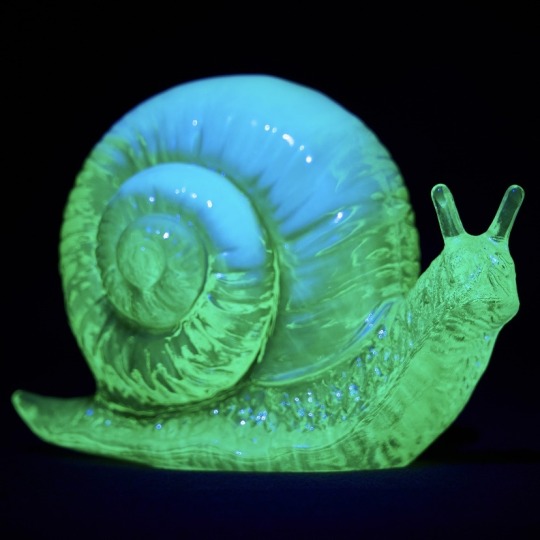
Fenton Vaseline Glass Snail, Vintage Yellow Opalescent Uranium Glass
#uranium glass#vaseline glass#snail#the dime for scale is much appreciated dear seller#paperweight#i guess?#uranium glass menagerie let’s go#gastropods#molluscs#mollusks#fenton#i knew this would do numbers yall are too easy#1k#as long as you’re here. remember when the lich fucked up the sweet waving snail from adventure time?#also so many of you think uranium glass is way more dangerous than it is. chill#it doesn’t need the hype it’s already sick af
23K notes
·
View notes
Text
A sea hare (蓝斑背肛海兔; Notarchus leachii cirrosus Stimpson) by the South China Sea. The purple in the water is ink.
11K notes
·
View notes
Text
Taxonomy Tournament: Gastropods

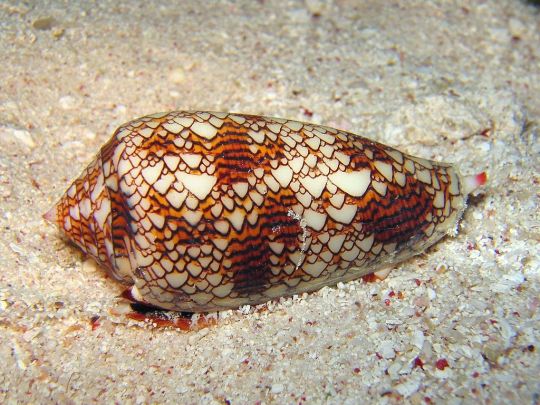
Strombidae. This family is made up of true conches, which have long eye-stalks and move in a leaping motion, and are used by humans as food, or their shells for decoration.
Conidae. This family is made up of cone snails, which hunt prey by launching their tooth from their mouth like a harpoon and injecting them with venom.
#animals#biology#polls#poll tournament#zoology#conches#gastropods#molluscs#spiralia#cone snails#Strombidae#Conidae#0x59v0xa6#animal tournament#Animal Tournament Round 1
625 notes
·
View notes
Text
Y'all know I'm a sucker for endangered species reintroduction stories, right? Especially when it's not a charismatic megafauna being highlighted. So of course I was excited when this headline crossed my dash.
The magnificent ramshorn (what a great name!), also known as Planorbella magnifica, is a tiny snail endemic to ponds and other quiet waterways in North Carolina's lower Cape Fear River basin. In fact, they were only known from four sites in the region. Due to plummeting numbers in its limited habitat, some of the last of these snails were removed from the wild to create an intensive captive breeding program. (It really doesn't take much to keep a snail happy in captivity once you figure out what conditions it needs.) The last wild individual was observed twenty years ago, and it is considered to be extinct in the wild.
That is, until now. Two thousand of these little reddish snails were released into a safe pond in Brunswick County. Researchers are using this as a way to observe how well these captive-bred snails adapt to their historic habitat, including successful reproduction. If all goes well, we can hope to see more reintroductions of these native mollusks back into their original range.
We nature nerds are biased, because we think everything in nature is awesome (yes, I'm even an apologist for mosquitoes!) So of course we get excited when a bunch of rare little snails get a second chance, because we understand how crucial each species is to its ecosystem. It can be tougher sometimes to sell the importance of this to the general public, who may question why it would be such a big deal for one snail species to go extinct. That's why I think it's so important for us to keep sharing our knowledge and--perhaps even more importantly--our enthusiasm for all these amazing beings. Keep being cheerleaders for critters like these snails, and your enthusiasm may end up being contagious!
#snails#ramshorn snails#magnificent ramshorn#molluscs#mollusks#gastropods#wildlife#animals#endangered species#habitat restoration#extinction#environment#conservation#nature#ecology#science#scicomm#North America
405 notes
·
View notes
Text

Invertober Day 30 - leopard slug
#invertober#invertober2023#slugs#leopard slug#molluscs#gastropods#inverts#invertebrates#animals#digital#drawing#id in alt
453 notes
·
View notes
Text
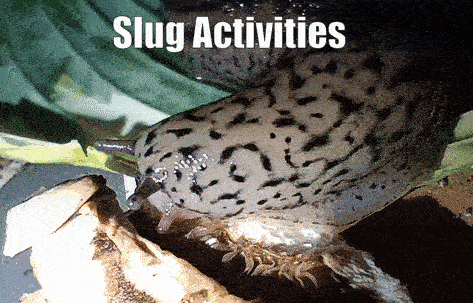
Slug Activities
#punkinz post#punkinz pics#gif#slug#gastropod#mollusc#mollusk#invertebrate#bugblr#mushroom#goblincore#nature#meme#shitpost#silly
852 notes
·
View notes
Text
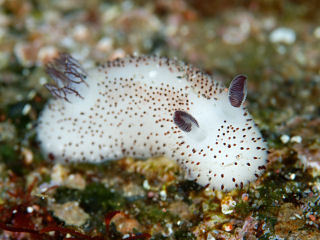
Submitted for classification by @plesiosaurys
#sea bunny#jorunna parva#sea slug#gastropod#mollusk#mollusc#submission#admin is an enjoyer of all things rabbit-like
156 notes
·
View notes
Text



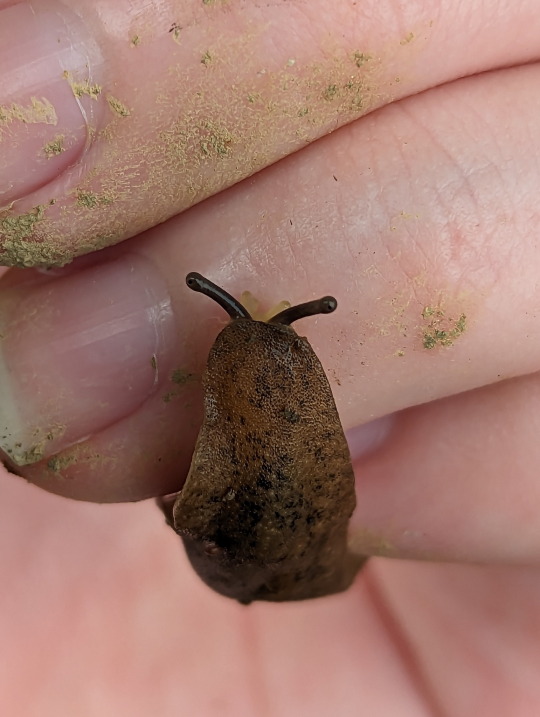
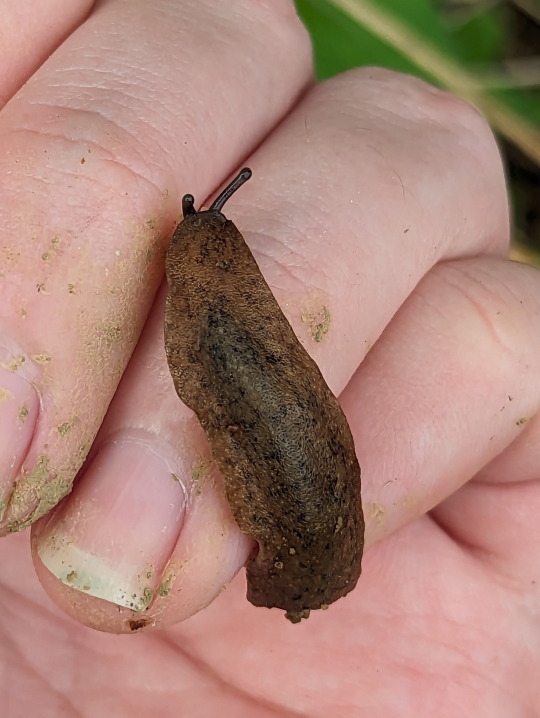
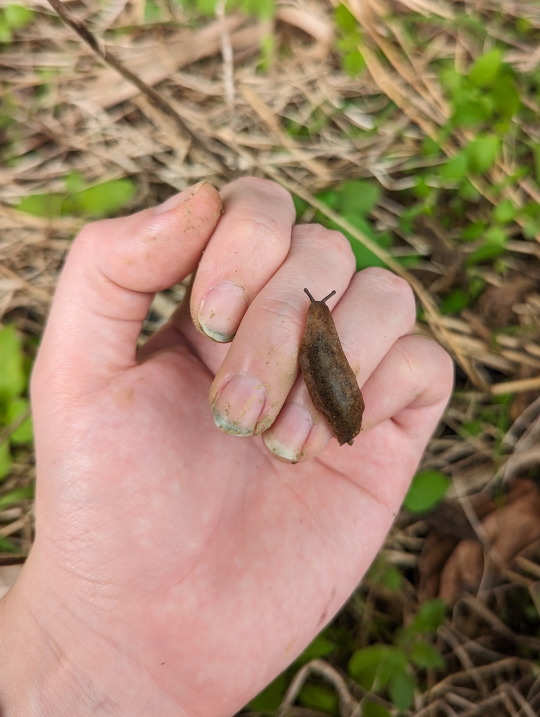

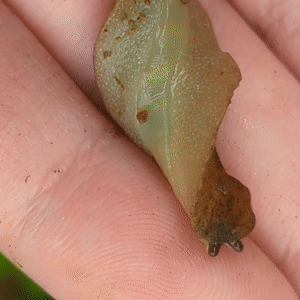
Caribbean Leatherleaf Slug.
30/07/23 - Gastropoda: Sarasinula plebeia
QLD:WET - El Arish, remnant vegetation on farmland
#invertblr#invertebrates#Sarasinula plebeia#Caribbean Leatherleaf Slug#Veronicellidae#Leatherleaf Slugs#Heterobranchs#Heterobranchia#Gastropoda#Gastropods#Mollusca#molluscs#mollusks#slugs#slugblr
356 notes
·
View notes
Text
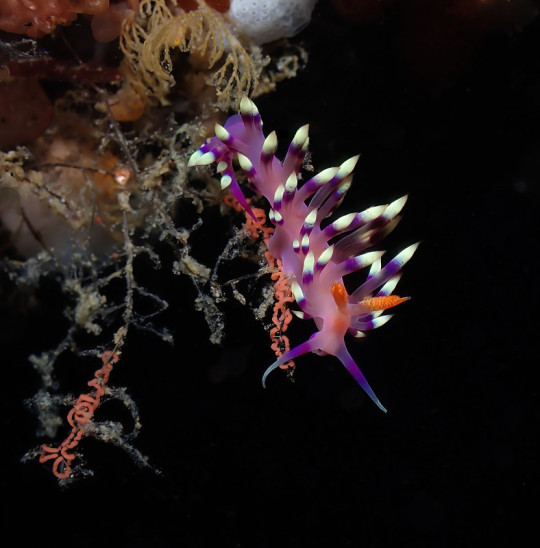
A desirable flabellina nudibranch (Coryphellina exoptata) in Luzon, Phillipines
by Robin Gwen Agarwal
#desirable flabellina#nudibranches#gastropods#molluscs#coryphellina exoptata#coryphellina#Flabellinidae#nudibranchia#gastropoda#mollusca#wildlife: the phillipines#wildlife: asia
127 notes
·
View notes
Photo
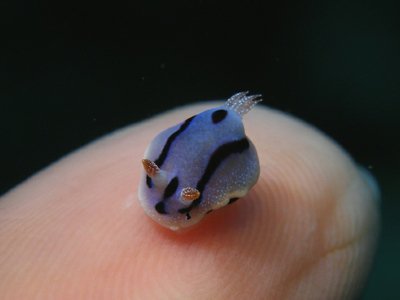
Baby sea slug, Chromodoris willani.
#baby#sea slug#sea slugs#baby sea slug#baby sea slugs#chromodoris#chromodoris willani#gastropod mollusc#gastropod molluscs#doridoidea#dorid nudibranch#dorid nudibranchs#animal#animals#baby animal#baby animals#water#ocean#sea#underwater#marine#aquatic#fingertip#close-up#nature
4K notes
·
View notes
Text
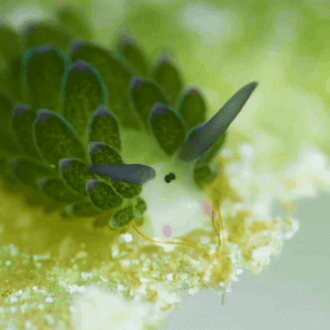

shaun the sheep nudibranch (costasiella kuroshimae) | source
#shaun the sheep nudibranch#costasiella kuroshimae#nudibranchs#stim#sfw#sea creatures#green#white#pink#yellow#underwater#gastropods#molluscs#nature#animals#ishy gifs#postish#sea slugs#leaf sheep
4K notes
·
View notes
Text
🤍💕 Dirona albolineata 💕🤍


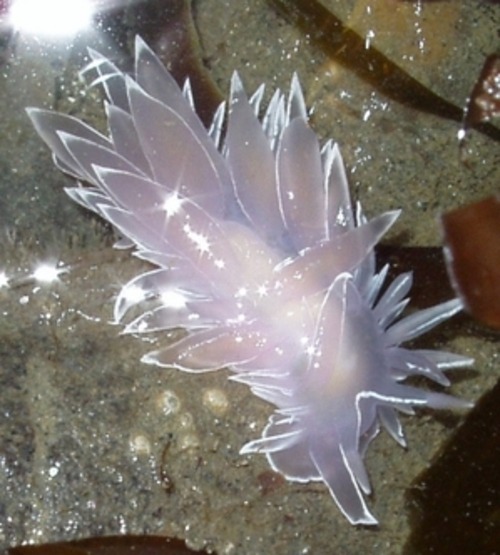


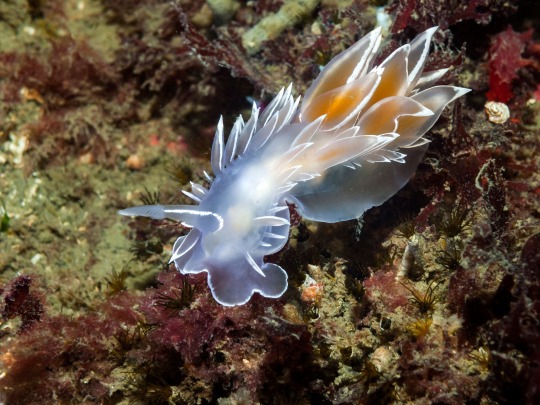
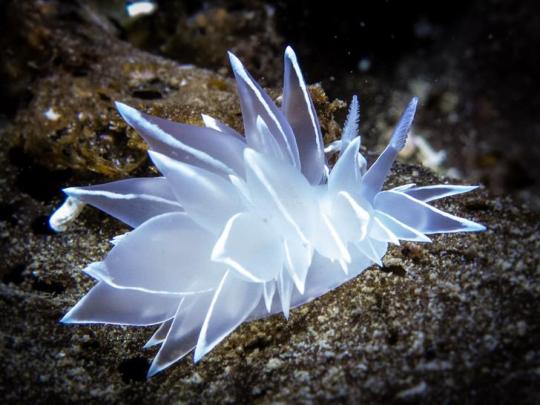
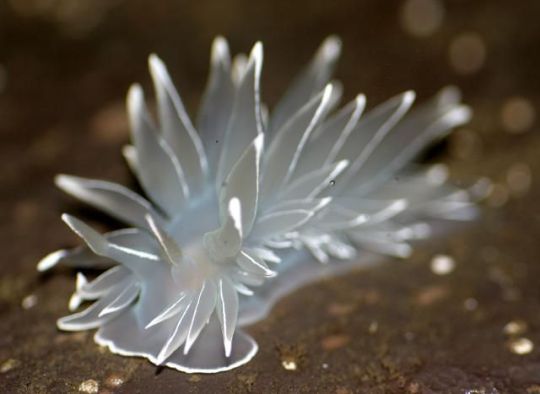
#The prettiest nudibranch <3#sea slugs#nudibranch#white-lined Dirona#Dirona albolineata#alabaster nudibranch#sea slug#marine life#THE MANY BENEFITS TO BEING A MARINE BIOLOGIST#gastropods#mollusk#molluscs#creature#invertebrates#pretty#animals#nature#ocean life#Pictures are not mine they are from google images#Unfortunately I could not say exactly who first uploaded them to the internet
320 notes
·
View notes
Text
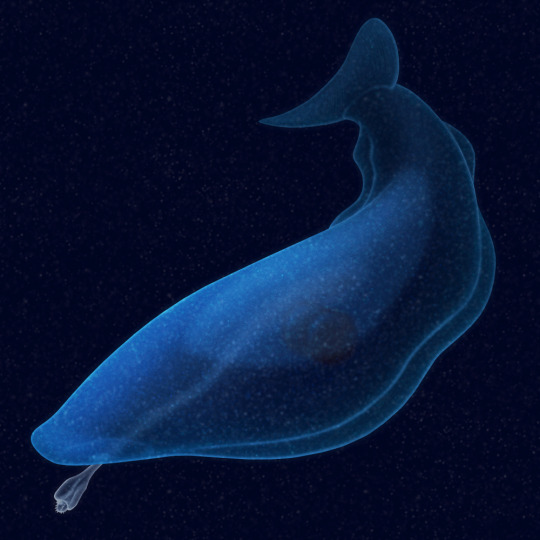
Typhloesus wellsi has been a mystery for a long time.
First discovered in the early 1970s, in the mid-Carboniferous Bear Gulch Limestone deposits (~324 million years ago) of Montana, USA, it was initially mistaken for the long-sought-after "conodont animal" due to the presence of numerous conodont teeth inside its body. But just a few years later well-preserved eel-like conodont animals were found elsewhere, and it became apparent that the conodont teeth inside Typhloesus had actually just been part of its last meal.
But if it wasn't a conodont… then what was it?
Up to about 10cm long (4"), Typhloesus had a streamlined body with a vertical tail fin and paired "keels" along its sides. It had a mouth and a gut cavity, but no apparent anus, and it also didn't seem to have any eyes or other sensory structures. And in the middle of its body there was something very weird – a pair of "ferrodiscus" organs, disc-shaped structures which contained high concentrations of iron but whose function was completely unknown.
This anatomy just didn't match any other known animals, so much so that it gained the nickname of "alien goldfish".
For the next few decades it remained a bizarre enigma, at best tentatively considered to represent an unknown lineage of some sort of metazoan that left almost no other fossil record due to being entirely soft-bodied.
But now, 50 years after its initial discovery, we might just finally have a clue about Typhloesus' true identity.
Recently something new was discovered in some Typhloesus specimens – a radula-like feeding structure that was probably part of an eversible proboscis. This would mean that Typhloesus was a mollusc, possibly a gastropod that convergently evolved a swimming predatory lifestyle similar to modern pterotracheoids.
It's not a definite identification yet, and even if it was a mollusc it was an incredibly strange one, with features like the ferrodiscus still lacking any explanation. But this discovery at least shows that there are still new details waiting to be found in the "alien goldfish" fossils, and gives us a start towards bringing its classification back down to earth.
———
Nix Illustration | Tumblr | Twitter | Patreon
#science illustration#paleontology#paleoart#palaeoblr#typhloesus#gastropod#mollusc#invertebrate#maybe#incertae sedis#alien goldfish#ferrodiscus#actual ancient aliens#art
1K notes
·
View notes
Text
Taxonomy Tournament: Gastropods
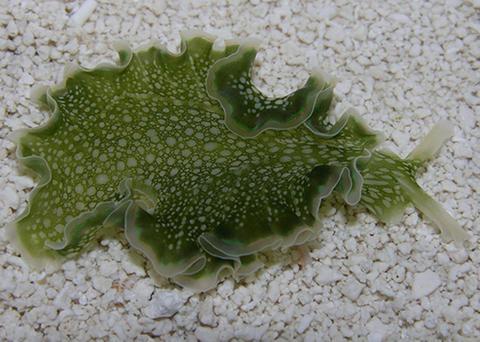

Sacoglossa. This superorder is made up of solar-powered sea slugs, which ingest the insides of algae cells. This allows some of them to perform photosynthesis using stolen chloroplasts, the only animals to do so.
Stylommatophora. This order is made up of air-breathing land snails and slugs, including the garden snail, great grey slug, Roman snail and banana slug
#animals#biology#polls#poll tournament#zoology#sea slugs#solar powered sea slugs#gastropods#molluscs#spiralia#slugs#snails#Sacoglossa#Stylommatophora#0x5v0x3a
69 notes
·
View notes